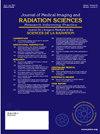优化 CT 方案:先进的减少剂量和造影剂策略,实现个性化患者护理--今天的创新和明天的展望
IF 1.3
Q3 RADIOLOGY, NUCLEAR MEDICINE & MEDICAL IMAGING
Journal of Medical Imaging and Radiation Sciences
Pub Date : 2024-10-01
DOI:10.1016/j.jmir.2024.101456
引用次数: 0
摘要
计算机断层扫描(CT)成像技术的飞速发展为提高诊断精确度和患者安全提供了前所未有的机遇。然而,这也给放射技师和医学影像专业人员带来了重大责任,他们必须紧跟剂量优化、造影剂 (CM) 管理和新兴技术整合方面不断发展的最佳实践。本讲座旨在全面介绍 CT 成像领域的当前创新和未来发展方向,重点关注个性化患者护理:本讲座的范围包括在当前和未来 CT 技术背景下对剂量优化技术和 CM 管理策略的详细研究。它涉及确保诊断效果与尽量减少患者暴露于电离辐射和造影剂相关风险之间的关键平衡。此外,演讲还深入探讨了人工智能(AI)和双能量 CT 等新兴技术的巨大潜力,说明了它们在完善和个性化诊断方案方面的作用。目的:本演讲的主要目的是让放射技师和成像专业人员深入了解 CT 成像中剂量优化和安全 CM 给药的原理和实际应用。它致力于全面概述可用于根据患者个人情况定制成像方案的方法和技术创新,从而提高诊断程序的安全性和有效性。此外,演讲还旨在培养与会者的前瞻性视角,鼓励他们采用有望重新定义以患者为中心的医学成像护理标准的新兴技术和实践。 诊断参考水平(DRLs)和剂量优化:与会者将探讨 DRL 的概念、DRL 的建立以及作为剂量优化基石的 DRL 的使用。会议将强调 DRLs 在监测和改善辐射安全方面的重要性,强调定期更新和遵守最佳实践的必要性。 2.造影剂管理策略:本节将深入探讨在造影剂增强 CT 成像中尽量减少碘剂量的策略。通过回顾最新进展和案例研究,与会者将了解如何在不影响诊断质量的情况下降低与造影剂相关的风险,并强调在选择造影剂方案时应考虑患者的具体情况。 3.CT 成像中的新兴技术:演讲将向与会者介绍重塑 CT 成像的尖端技术。重点领域包括双能量 CT、迭代重建算法以及人工智能和 ML 在优化成像方案中的整合。本部分旨在展示这些技术如何支持个性化护理和剂量优化。 4.CT 成像的未来方向:展望未来,演讲将讨论光子计数 CT 和无碘造影剂等新技术的发展潜力,以进一步提高患者安全性和诊断准确性。与会者将深入了解正在进行的研究和技术进步将如何影响 CT 成像的未来。本文章由计算机程序翻译,如有差异,请以英文原文为准。
Optimizing CT Protocols: Advanced Dose Reduction and Contrast Media Strategies for Personalized Patient Care – Today's Innovations and Tomorrow's Horizons
The rapid advancement of Computed Tomography (CT) imaging technology offers unprecedented opportunities to enhance diagnostic precision and patient safety. However, it also imposes a significant responsibility on radiographers and medical imaging professionals to stay abreast of evolving best practices for dose optimization, contrast media (CM) administration, and the integration of emerging technologies. This presentation seeks to provide a holistic overview of current innovations and future directions in CT imaging, focusing on personalized patient care.
Scope: The scope of this presentation encompasses a detailed examination of dose optimization techniques and CM administration strategies within the context of current and forthcoming CT technology. It addresses the critical balance between ensuring diagnostic efficacy and minimizing patient exposure to ionizing radiation and contrast media-related risks. Furthermore, the presentation extends into the promising potential of emerging technologies, including artificial intelligence (AI) and dual-energy CT, illustrating their role in refining and personalizing diagnostic protocols.
Aim: The primary aim of this presentation is to equip radiographers and imaging professionals with a deep understanding of the principles and practical applications of dose optimization and safe CM administration in CT imaging. It endeavors to provide a comprehensive overview of the methodologies and technological innovations that can be employed to tailor imaging protocols to individual patient profiles, thereby enhancing both the safety and efficacy of diagnostic procedures. Additionally, the presentation aims to foster a forward-looking perspective among attendees, encouraging the adoption of emerging technologies and practices that promise to redefine the standards of patient-centered care in medical imaging.
1. Diagnostic Reference Levels (DRLs) and Dose Optimization: Participants will explore the concept of DRLs, their establishment, and utilization as a cornerstone for dose optimization. The session will highlight the importance of DRLs in monitoring and improving radiation safety, underscoring the need for regular updates and adherence to best practices.
2. Contrast Media Administration Strategies: This section delves into strategies for minimizing iodine dose in contrast-enhanced CT imaging. By reviewing recent advancements and case studies, attendees will learn about reducing CM-related risks without compromising diagnostic quality, emphasizing patient-specific considerations in CM protocol selection.
3. Emerging Technologies in CT Imaging: The presentation will introduce participants to cutting-edge technologies reshaping CT imaging. Focus areas include dual-energy CT, iterative reconstruction algorithms, and the integration of AI and ML in optimizing imaging protocols. This segment aims to demonstrate how these technologies can support personalized care and dose optimization.
4. Future Directions in CT Imaging: Looking ahead, the presentation will discuss the potential of novel developments, such as photon-counting CT and iodine-free contrast agents, to further enhance patient safety and diagnostic accuracy. Attendees will gain insights into how ongoing research and technological advancements are poised to influence the future of CT imaging.
求助全文
通过发布文献求助,成功后即可免费获取论文全文。
去求助
来源期刊

Journal of Medical Imaging and Radiation Sciences
RADIOLOGY, NUCLEAR MEDICINE & MEDICAL IMAGING-
CiteScore
2.30
自引率
11.10%
发文量
231
审稿时长
53 days
期刊介绍:
Journal of Medical Imaging and Radiation Sciences is the official peer-reviewed journal of the Canadian Association of Medical Radiation Technologists. This journal is published four times a year and is circulated to approximately 11,000 medical radiation technologists, libraries and radiology departments throughout Canada, the United States and overseas. The Journal publishes articles on recent research, new technology and techniques, professional practices, technologists viewpoints as well as relevant book reviews.
 求助内容:
求助内容: 应助结果提醒方式:
应助结果提醒方式:


